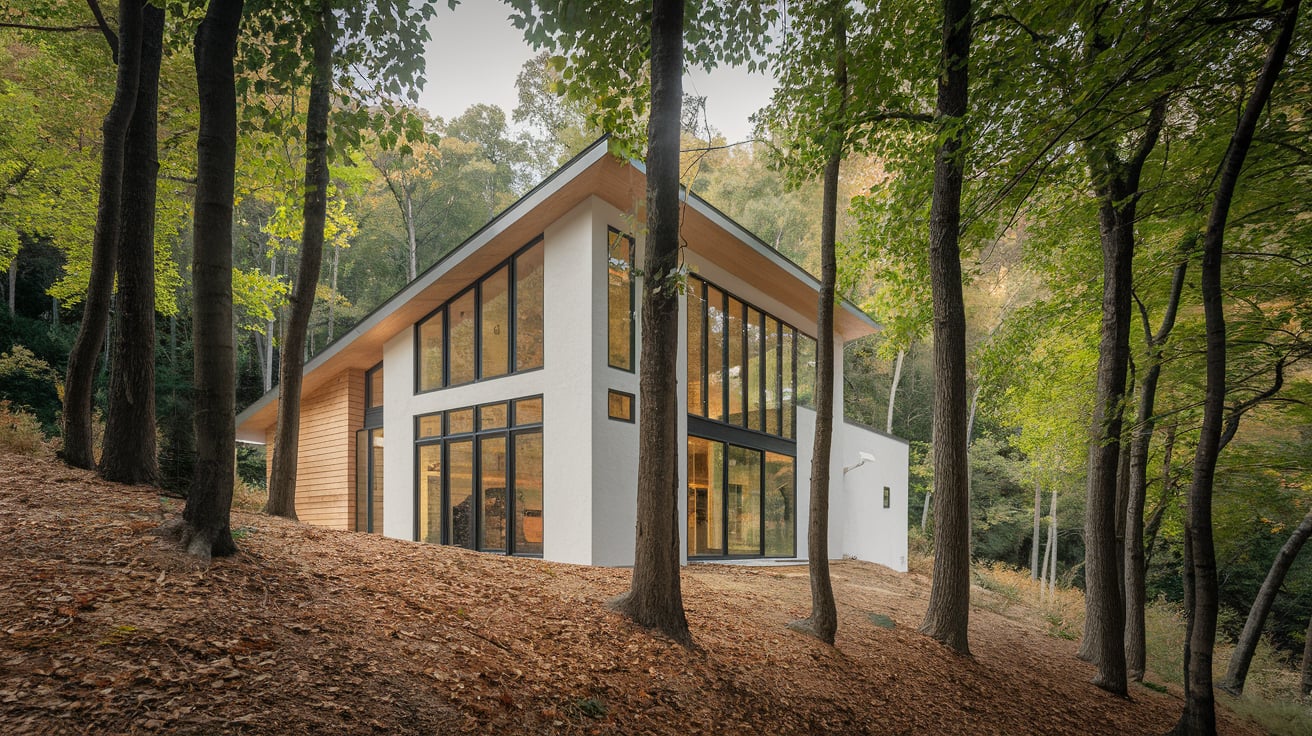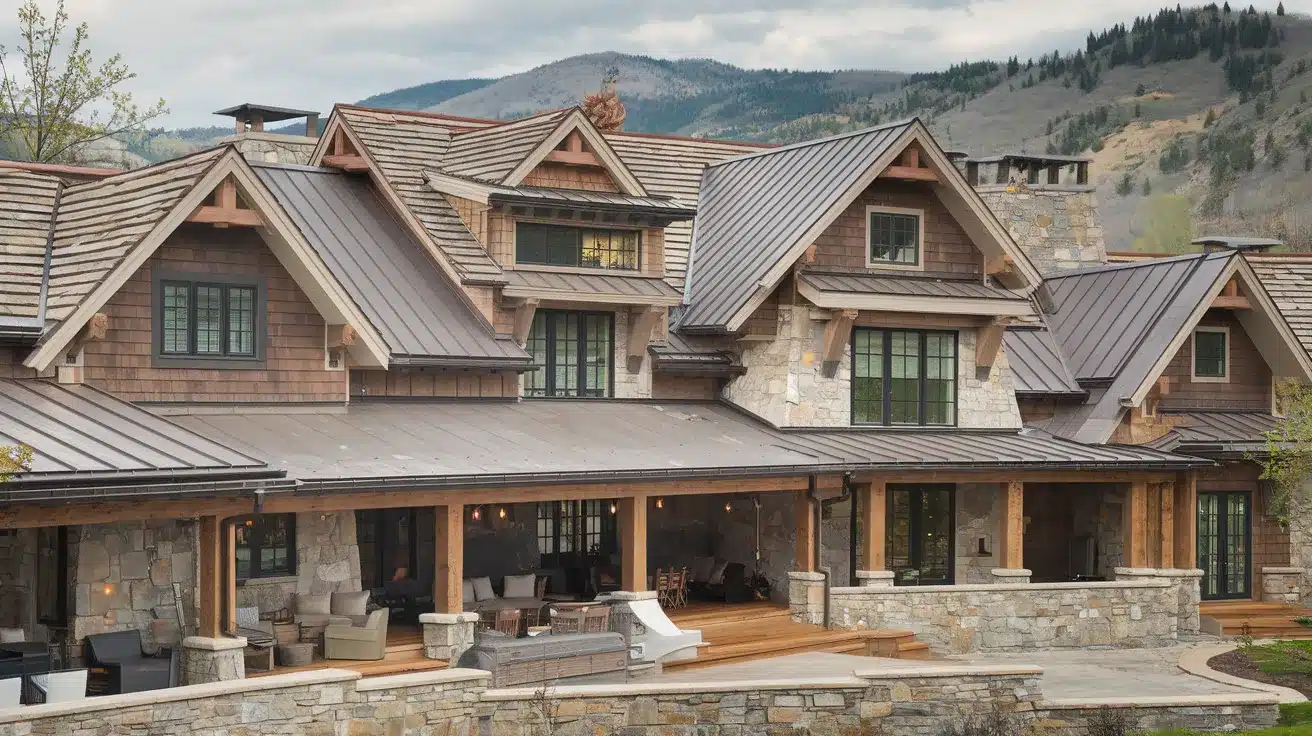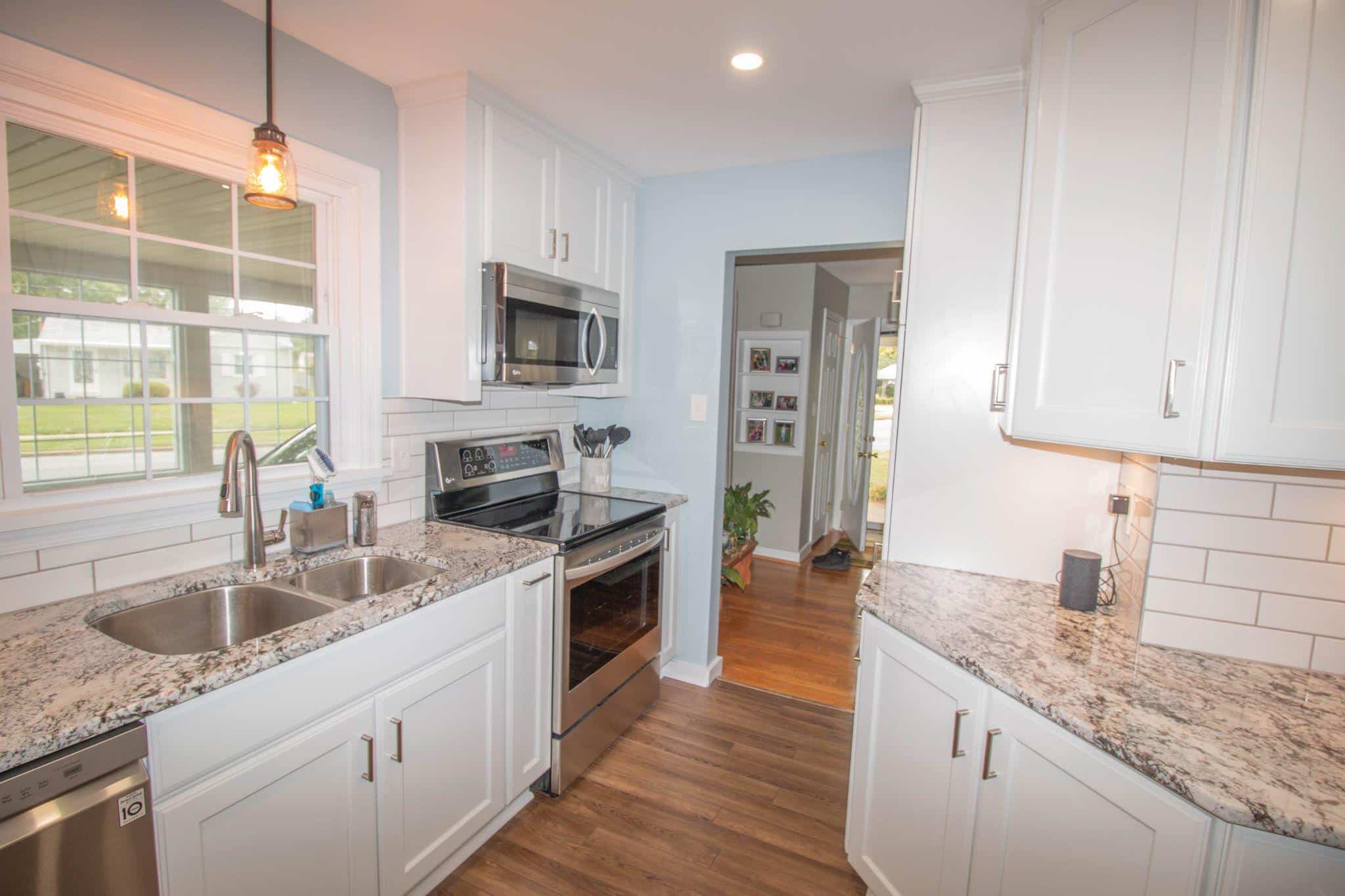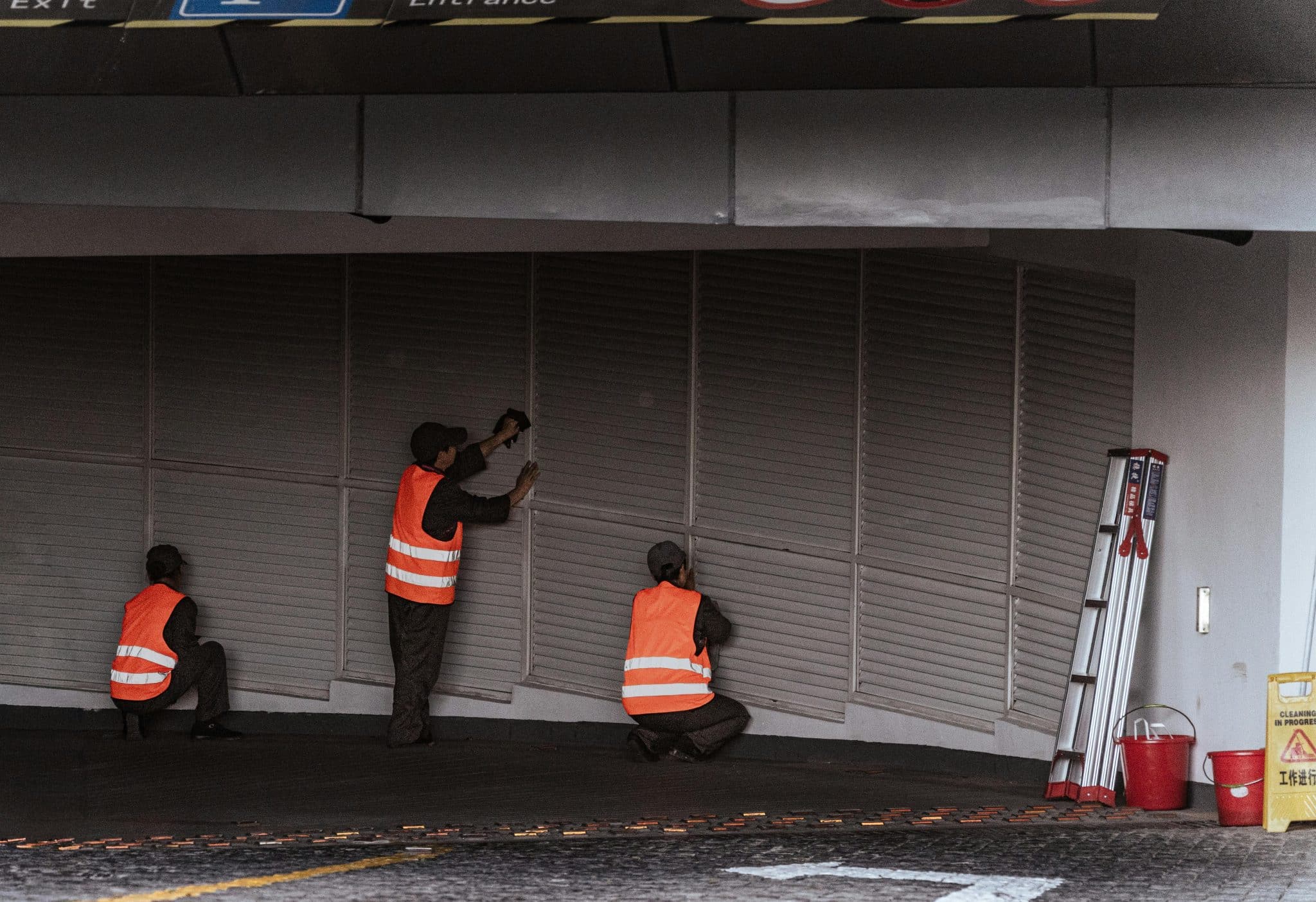Designing a mountain home that fits perfectly into its surroundings while meeting modern living needs can feel overwhelming.
With so many styles and materials, getting lost in the options and second-guessing your decisions is easy.
Finding the right design approach doesn’t have to be complicated.
I’ll share trusted combinations of colors, materials, and architectural elements that create stunning mountain homes, from simple cabin-inspired designs to contemporary structures with bold features.
In this guide, I’ll discuss popular styles for modern mountain homes, providing real examples and practical insights to help you choose the perfect design for your mountain retreat.
Aesthetic-Driven Styles
1. Monochrome & Contrast Designs
Single-color palettes make mountain homes stand out beautifully against natural backdrops.
A pure white exterior creates a striking look against mountain scenery, while all-black designs offer sophisticated appeal.
This approach focuses on the home’s architectural features while complementing the surrounding landscape.
2. Natural Materials Integration
These designs thoughtfully combine stone, wood, and metal. Local stone on lower levels grounds the structure, while wood elements add warmth.
Metal accents provide durability and visual interest. Together, the materials create homes that seem to belong in their mountain setting.
3. Rustic-Modern Fusion
This style combines traditional mountain materials with contemporary design elements. Think exposed timber frames paired with large glass panels or weathered wood siding with sleek metal roofing.
The combination honors mountain-building traditions while incorporating modern conveniences.
4. Cottage-Style Mountain Homes
These smaller-scale homes offer cozy charm with practical features. Steep rooflines and shuttered windows blend traditional cottage elements with mountain durability.
Stone foundations and natural wood siding create an inviting appearance that works well in wooded settings.
5. Extreme Contrast Homes
These designs make bold statements through material and color contrasts. Black windows against light-colored walls or dark metal roofing over pale stone create visual interest.
The stark contrasts help define architectural features while maintaining a clean, modern look.
Structural Styles
6. A-Frame Mountain Homes
A-frame designs feature steeply angled walls that extend from the foundation to form a triangle. This classic mountain structure handles snow well and maximizes mountain views.
Modern A-frames often include glass walls and spacious decks, updating the traditional design for today’s living needs.
7. Flat & Shed Roof Homes
These homes use straight, clean rooflines to create a distinctly modern silhouette. Flat sections are combined with slightly angled shed roofs to withstand mountain weather while maintaining a contemporary look.
The simple rooflines allow large windows and create useful outdoor living spaces on multiple levels.
8. Mixed Roofline Homes
By combining different roof shapes and heights, these homes create visual interest and practical benefits.
Various angles and levels allow for high ceilings, covered porches, and protected entryways.
The different roof sections also create natural divisions between living spaces while effectively managing snow and rain.
9. Treehouse-Inspired Homes
These designs bring childhood dreams to life through smart architecture. They feature:
– Raised main living areas that seem to float among the trees
– Extended outdoor platforms offering panoramic views
– Natural wood exteriors that blend with the forest setting
Function & Performance-Based Styles
10. Slanted Roof Homes for Snow & Rainfall
These homes feature calculated roof angles that help them naturally handle mountain weather. The slopes direct snow and rain away from key areas like entryways and windows.
Smart overhangs protect walls and create sheltered outdoor spaces, while the angles add visual appeal to the overall design.
11. Maximized Window Designs
These homes turn mountain views into living art through well-planned window placement.
Floor-to-ceiling glass panels bring natural light deep into living spaces while carefully positioning and capturing each room’s best views.
The windows also help warm the home naturally during cold months.
12. Upper-Level Outdoor Living Spaces
These designs place decks, patios, and sitting areas on higher floors to maximize mountain settings. The elevated spaces offer:
– Clear views above the treeline
– Natural separation from wildlife
– Private areas for outdoor relaxation
– Extra living space without increasing the home’s footprint
– Smart use of sloped building sites
Each style puts function first while creating beautiful living spaces that work well in mountain environments.
Color & Material-Driven Styles
13. Gray & Earth-Toned Exteriors
These homes use subtle color palettes that mirror the mountain landscape. Various shades of gray and brown create depth without competing with natural surroundings.
The muted colors also help the home weather gracefully over time while reducing visible wear from the sun and elements.
14. Multi-Colored Siding & Roofing
This approach highlights architectural features using different but complementary colors. For example, lighter siding paired with darker roofing creates natural breaks in the visual line.
The thoughtful color combinations add interest while maintaining a cohesive overall look.
15. Industrial-Modern Homes
These designs incorporate raw materials like exposed steel, concrete, and glass.
The honest expression of building materials creates clean lines and strong shapes. Large metal panels and concrete surfaces offer low maintenance while adding a contemporary style.
16. Minimalist Mountain Homes
These designs focus on essential elements, removing anything unnecessary.
Simple forms and limited material choices create calm, uncluttered exteriors. The restrained approach lets the mountain setting take center stage while providing comfortable, functional living spaces.
Each color and material choice serves practical and visual purposes, creating homes that look good and function well in mountain environments.
17. Charcoal & Metal-Accented Mountain Homes
Dark exteriors create a bold statement in mountain settings, with charcoal siding paired with raw metal trim.
Black windows and metal roofing add definition, while the deep colors help the home settle naturally into shaded forest surroundings.
Unique Architectural Features
1. Cantilevered Mountain Homes
These homes feature sections that extend beyond their main support, creating spaces that seem to float above the ground. The extended portions offer protected parking below while maximizing views above.
This design works particularly well on steep lots, turning challenging terrain into an architectural advantage.
2. Earth-Sheltered & Underground Homes
Built into hillsides, these homes blend seamlessly with the landscape. The earth provides natural insulation, keeping interiors comfortable year-round.
Large front-facing windows flood the spaces with light, while the rear portions nestle into the mountain, offering protection from harsh weather.
3. Floating Mountain Homes
These homes appear to hover above their sites, supported by sturdy pillars. Their design preserves natural water flow and plant life underneath while providing exceptional views.
Raised foundations also protect against snow accumulation and wildlife.
Regional Influences
1. Scandinavian Mountain Homes
These designs bring Nordic simplicity to mountain settings. Clean lines, light wood, and simple forms create bright, welcoming spaces. Large windows capture natural light, while steep roofs effectively handle snow loads.
2. Alpine Chalet-Inspired Homes
Drawing from European mountain traditions, these homes feature broad roofs and substantial overhangs. Wooden balconies and detailed trim work add character, while modern materials ensure durability.
3. Rocky Mountain Lodge Style
This style combines local stone and timber with generous living spaces. Covered porches and multiple fireplaces prepare these homes for outdoor living and entertainment, while high ceilings and exposed beams create dramatic interiors.
Conclusion
Mountain living offers something for every preference. From homes built into hillsides to those that reach mountain peaks, each design brings its approach to combining comfort with natural surroundings.
Whether you lean toward the simplicity of Scandinavian designs or prefer the solid presence of stone and timber lodges, success lies in choosing elements that match your site and lifestyle.
The key is finding the right balance between practical features and personal style.
The mountain home you create will be more than just a house – it becomes part of the landscape, a shelter in nature, and a space where indoor comfort meets outdoor beauty.

























